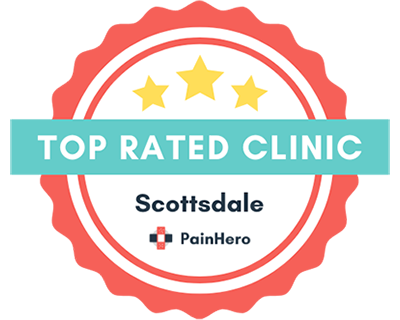
Welcome to the world of running, where every stride is a step toward improved health and endurance. Whether you’re a seasoned marathoner or a novice jogger, one thing all runners have in common is the potential for injuries that can slow us down. In this blog post, we’ll explore the art of optimizing your running technique, focusing on techniques to improve your running form and efficiency.
Running injuries are a common concern for athletes of all levels. One of the most prevalent conditions is Patellofemoral Pain Syndrome (PFPS), also known as “runner’s knee.” PFPS is characterized by pain around the kneecap and can hinder your ability to run comfortably. Treatment options range from rest and ice to physical therapy and strengthening exercises.
Finding Your Stride Length and Cadence
Striking the right balance between stride length and cadence (steps per minute) is crucial for efficient running. Overstriding (taking excessively long steps) can lead to increased impact and potential injuries, while a high cadence with short strides can improve efficiency and reduce stress on your joints. To find your optimal stride, experiment with different lengths and cadences during your runs and listen to your body’s feedback.
The Role of Foot Strike
Foot strike, or how your foot lands on the ground, is another critical element of running form. There are three common types of foot strikes:
Heel Strike
Landing on your heel first, which can lead to more impact and stress on your knees.
Midfoot Strike
Landing on the middle of your foot, which is considered ideal for most runners.
Forefoot Strike
Landing on the balls of your feet, which may reduce impact but requires strong calf muscles.
Mobility For Running
Mobility is the linchpin of a successful and sustainable running journey. Achieving the optimal range of motion (ROM) and flexibility in your joints and muscles is essential for enhancing your running form, maximizing performance, and mitigating the risk of injuries. Scottsdale Physical Therapy & Performance, a trusted name in Scottsdale sports medicine physical therapy, understands the importance of mobility for runners.
Our team of skilled professionals specializes in improving mobility, helping runners unlock their true potential. With our expert guidance, you can address limitations in range of motion, enhance flexibility, and ensure that your joints and muscles are ready to support your every stride. Don’t let mobility constraints hold you back – take the first step toward a more efficient and injury-resistant running experience by reaching out to Scottsdale Physical Therapy & Performance, your partner in achieving peak running performance.
Range of Motion (ROM)
Proper mobility ensures that your joints have an adequate range of motion. This means that your hip, knee, and ankle joints, in particular, should be able to move freely and comfortably. Having good ROM allows for a more fluid and efficient stride while running.
Mobility and Overuse Injuries
Adequate mobility in key joints, such as the hips, ankles, and knees, helps distribute the forces of impact more evenly throughout your body. When your joints are mobile, they can absorb shock and stress, reducing the risk of overuse injuries like shin splints, IT band syndrome, and stress fractures.
Injury Rehab for Runners
In cases where a running-related injury does occur, mobility exercises are often an integral part of the rehabilitation process. They can help restore joint function and muscle flexibility, facilitating a safe return to running.
To enhance your mobility for running:
- Incorporate dynamic stretches and mobility exercises into your warm-up routine before running.
- Include static stretching and foam rolling in your post-run cool-down to maintain flexibility.
- Consider cross-training activities like yoga and Pilates to improve overall flexibility and mobility.
- Seek guidance from a physical therapist or running coach if you have specific mobility limitations or recurring injuries.
Summary
In summary, achieving optimal mobility is paramount for runners looking to enhance their performance, maintain proper running form, and prevent injuries. Scottsdale Physical Therapy & Performance, a trusted provider of Scottsdale sports medicine physical therapy, recognizes the significance of mobility in the running community. Our expert team specializes in improving runners’ range of motion and flexibility, ensuring that joints and muscles are primed for peak performance. Whether you’re a seasoned marathoner or a beginner, addressing mobility limitations is essential for a successful running journey. Don’t let mobility constraints hinder your progress – take the initiative and partner with Scottsdale Physical Therapy & Performance to unlock your full running potential.
FAQs
1. What is the ideal stride length and cadence for efficient running?
Finding the perfect stride length and cadence varies from person to person, but a general guideline is to aim for a cadence of 170-180 steps per minute and a stride length that feels comfortable. Experimentation and listening to your body are key to finding the right balance
2. Can poor mobility lead to running injuries?
Yes, poor mobility can contribute to running injuries. Limited joint range of motion and muscle tightness can lead to improper running form, increasing the risk of injuries such as shin splints, IT band syndrome, and stress fractures.
3. How can I tell if my running form needs improvement?
Video analysis of your running form can be a valuable tool. You can record yourself while running and review the footage to identify any irregularities in your posture, stride, or foot strike. Additionally, seeking feedback from a running coach or physical therapist can provide valuable insights into areas for improvement.








